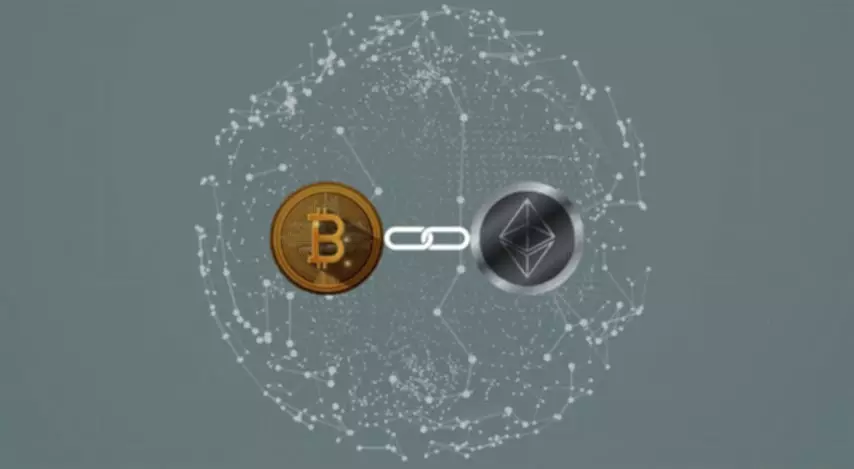September 03, 2021 |
James Messi
Wrapped tokens exist to expand the interoperability between existing blockchain protocols such as the Bitcoin and Ethereum networks. Wrapping tokens is a method used to sidestep the compatibility issues between most blockchains so that non-native cryptocurrencies become useful on external networks.
What are Wrapped Tokens?
Wrapped tokens describe a version of a cryptocurrency, like Bitcoin, that holds the same value but is tokenized in a way that makes it compatible with other blockchain ecosystems.
It’s important to note that, while they maintain the same value, wrapped tokens are not the same as the assets that they are wrapped from. For example, wrapped Bitcoin (WBTC) is not identical to Bitcoin (BTC) from a technical perspective. If you were to send WBTC to a BTC address, your funds would be lost. WBTC refers to a version of Bitcoin that is tokenized on the Ethereum blockchain. To use tokens wrapped for the etereum blockchain, hold them in an Ethereum compatible wallet such as MetaMask. This applies to every blockchain that you interact with that can store and transfer wrapped tokens. Always ensure that you are using a wallet that is compatible with the blockchain that the wrapped tokens are minted on.
What is the Purpose of Wrapped Tokens?
Let’s say that you want to use a decentralized application that exists in the Ethereum ecosystem but you only have Bitcoin, which is not compatible with Ethereum. In order to use your Bitcoin on Ethereum, you need to wrap it.
There are two primary methods used to do this. First, you can simply trade your BTC for WBTC on a cryptocurrency exchange. Or you can generate new WBTC by sending BTC to a custodian who can mint an equal amount of WBTC. In this way, wrapped tokens are managed similarly to stablecoins. A one-to-one reserve of the base asset must be held in order for the wrapped token to maintain its price parity. Using WBTC as an example, in order for it to have the same value as BTC, the wrapped tokens in circulation must be equal to the amount of BTC that is held in reserves. The current circulating supply of WBTC tokens is estimated to be around 197,000. This suggests that 197,000 BTC are held in reserve.
Once your BTC is converted to WBTC, you now hold the same amount of value in an ERC20 token that is compatible with the Ethereum blockchain and can be used on decentralized platforms such as Uniswap or Matcha.
Wrapped Tokens: Advantages

As developers continue to focus their efforts on decentralized projects, many new decentralized applications, exchanges, metaverses, and games are being launched on blockchains like Ethereum. The primary driver of the ecosystem’s growth has come from the decentralized finance sector, where wrapped tokens like WBTC are most commonly used.
Use cases for wrapped tokens on Ethereum include yield farming, staking, margin trading, providing liquidity, and more.
There has been a long-standing debate amongst Bitcoin advocates that both promote and oppose the idea of smart contracts coming to the Bitcoin blockchain. Those that are in favor of the idea believe that BTC would garner more demand if its blockchain expanded its functionality. Those in opposition to Bitcoin smart contracts argue that adding these capabilities would materially affect the integrity and security of the Bitcoin blockchain.
Thanks to the development of wrapped tokens, these types of inter-community debates are less consequential as anyone who wants to expand the capabilities of their BTC holdings can do so by converting it to WBTC. As mentioned above, with WBTC, Bitcoin holders can use their BTC to earn more BTC by providing liquidity or staking on the Ethereum network using WBTC.
Wrapped Tokens: Drawbacks
We mentioned that creating a new wrapped token requires a custodian to take in an asset and mint the wrapped version. This introduces an additional element of risk as the network participants must trust that the custodian will properly maintain the balance of underlying assets to wrapped assets. This ensures that the corresponding wrapped token maintains the same value as the underlying asset.
While many projects such as Avalance (AVAX) and Polkadot (DOT) are building interoperable blockchains that can communicate and transfer assets directly, these products are still in development. This leads to the second drawback with wrapped tokens, and that is the fact that they need to be wrapped. Ideally, layer-1 blockchain assets like Bitcoin and Ethereum could be exchanged through a direct connection between each blockchain. The need to wrap tokens ultimately creates a need for additional fees for transactions that each network participant needs to pay. When interoperable blockchain connections are fully developed, most cryptocurrencies will be directly compatible with major protocols like Ethereum, Bitcoin, and Solana. This will eliminate these drawbacks by removing the reliance on trusted third parties to mint wrapped tokens. It will also enable such transfers to take place in one transaction which saves each network participant’s time and reduces the number of transaction fees that need to be paid.
Summary
Wrapped tokens are truly powerful. Having the ability to quickly convert assets that can become compatible with multiple blockchains opens up a world of possibilities for cryptocurrency. By creating convenient portals from one chain to another, value and liquidity can more easily be pooled together and moved efficiently.
Get started today to buy or sell popular tokens that can be wrapped and used within the broader DeFi landscape. Beaxy traders pass KYC in 5 minutes or less on average.